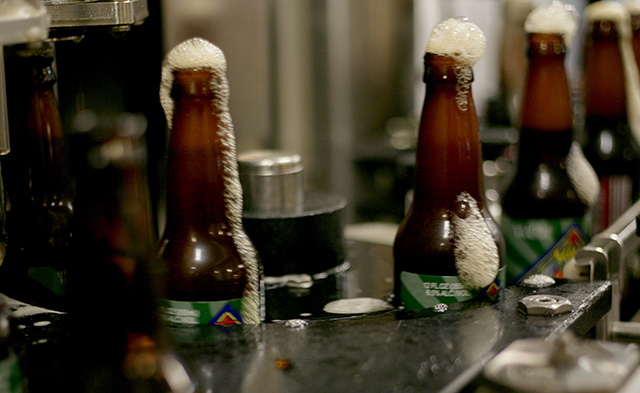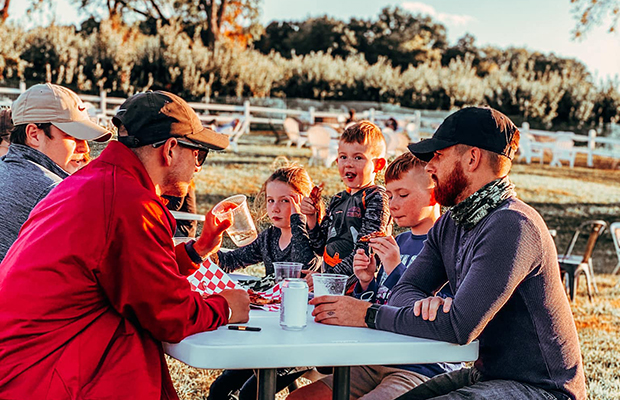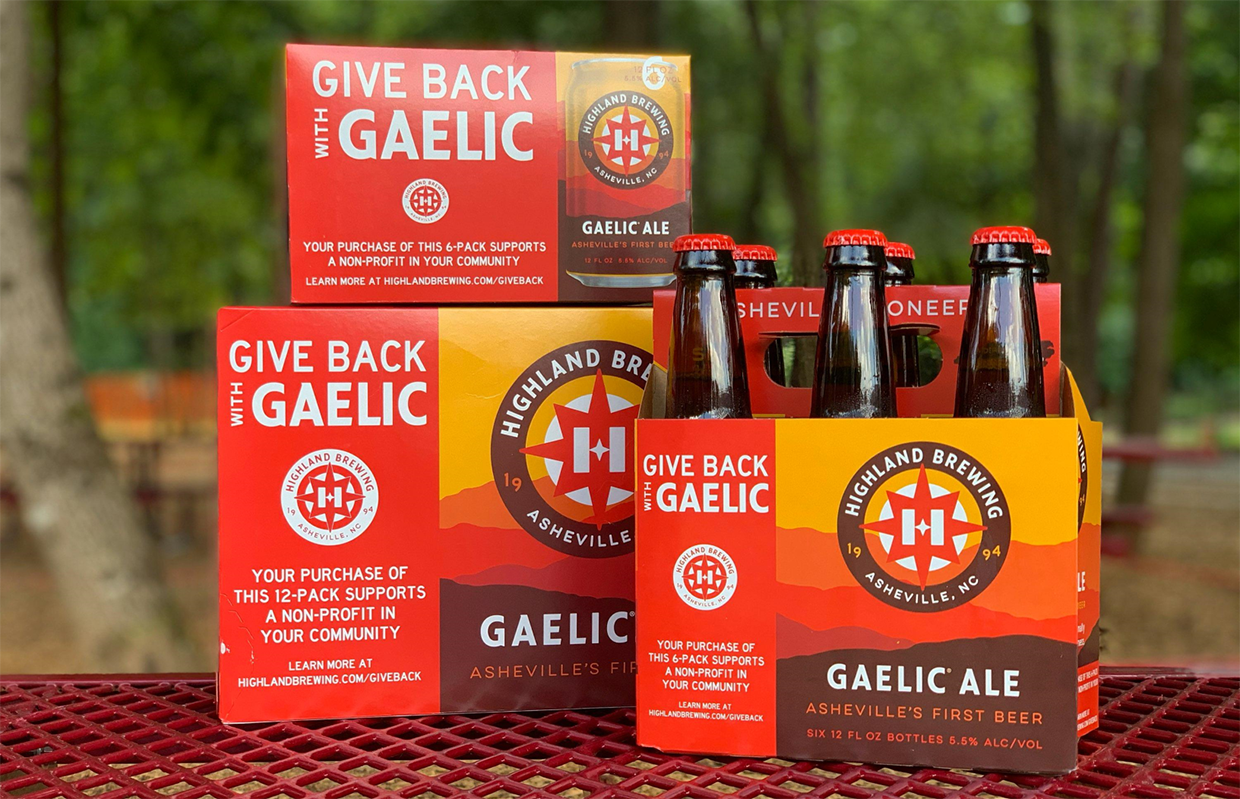
While more and more four- and six-pack of cans start to line shelves, some brewers intentionally are bucking the trend with success — through a various avenue of bottles, including 12-ounce longnecks, 22-ounce “bombers,” 750-milliliter bottles with swing-tops or cork and cages.
For some breweries, the bottle route has been a necessity based on cost and availability. For others, veterans like Pike Brewing, bottles are a way of life for the established veteran outfit in Seattle that just celebrated 26 years of business.
Owner Charles Finkle, who opened the brewery in 1989, said it produces about 40 percent of its output in bottles, with the other 60 coming from drafts. Offering four core brands in 12-ounce bottles, Pike also offers two beers in what Finkle calls “dinner bottles” instead of bombers, along with six other seasonals in the larger bottle format.
“We try to encourage [customers] to view beer as a product of gastromety, and not just a way to inebriate yourself,” he said, adding that at Pike they prefer the dinner bottle size over longneck 12s, noting the additional costs to designing not just the bottle art, but packing art as well.
It’s a job Finkle knows well as he designs all the art for the brewery as well as for Samuel Smith and Ayinger among many others. “It’s so labor-intensive,” he said.
Getting customers to view the 22-ounce bottles as a common offering is the mission for San Marcos, California’s Port Brewing, which also operates The Lost Abbey and The Hop Concept labels. Founded in 2006, Port Brewing bottles about 60 percent of its 15,000 capacity, in either bombers (for Port and The Hop Concept) or 375 and 750 milliliter cork and cage bottles (for The Lost Abbey).
The reason for the three labels is to bring a different experience from each one.
Port’s Director of Media and Marketing, Adam Martinez said the style of beers they make are more appropriate for the bottle style, focusing on bigger beers that are aged for The Lost Abbey while The Hop Concept is centered on IPAs you share. Port gives many offerings as well, such as Old Viscosity, an Imperial American Stout and Mongo, a Double IPA.
“Our beers are a more celebratory in style. A chance to open and share,” Martinez said. “You won’t see many people chugging from the bottle.”
Buying locally for their 22s, Martinez said that the brewery orders its cork and cage bottles from Germany, which does raise the price point for The Lost Abbey offerings. Offering 375s help keep the price down for consumers yet they still can be shared and give tastes to many people off one bottle.
The price points are lower for The Hop Concept beers since he said it’s seen as more of an opportunity to share with friends and more of a regular night beer. “Popping a cap is a much different experience than popping a cork,” he said.
Strictly working from 750s with a swing top is Tucson’s Iron John’s Brewing Company, a two-barrel system run, in part, by General Manager John Markley along with head brewer John Adkisson. The duo feels that the bottle style can dictate the feeling by a consumer, pointing out they like to market their beers, including multiple IPAs; Saisons; Stouts and lagers, more like wine.
“We produce a high-end product in limited quantity and wanted packaging to help us make that image,” Markley said. “We feel our bottles speak to the quality of what’s inside. We also wanted to promote the sharing of the beer, pairing during a meal and resealing for drinking the rest at some later time.”
He added that Iron John’s charges a one dollar deposit on its bottles and he noted a majority of them are returned for reuse. “Our packaging actually helps drive customers back to our door,” he said.
Education is also a step in selling bottles larger than 12 ounces. It starts with the effort to educate and it works over to the customer base, including educating the sellers, stores and restaurants on how to market the larger format. “Sometimes the higher price point is an issue, but there are 27 ounces in the bottle and customers eventually understand that,” Markley said. “Harder [to educate] has been the wholesale market to bars and restaurants. It takes some time to educate staff, but places that get it have done well with our concept.”
Brian Buckman of Illuminated Brew Works in Chicago feels the same way when it comes to increased education. That knowledge can lead to more sales. He also sees the packaging, all in 750s, as an experience.
“Our brand is about beer made to express nuance and to celebrate food,” he said. “It’s hard to imagine the greatest meal of my life served with a can of beer.”
With 2015 being its first year of production, IBW plans to bottle about a third of its 400 barrels with the intention to stay in bottles.
“I love cans, but I don’t think they are appropriate for every style,” Buckman said. “It’s probably arbitrary and totally subjective, but, much like some people love film for reasons they can’t quite articulate, I think pouring a beer from a bottle creates a qualitatively different drinking experience. And vice versa, there’s some beers I love to drink from a can and the same beer in a bottle does not hold the same allure or impact.”
In Ocean Spring, Mississippi, Crooked Letter Brewing Company’s owner Paul Blacksmith said that the company is working on changing the culture on how beer is drank in the Magnolia State.
With Crooked Letter’s four staples all in 12-ounce Heritage-style bottles, it currently only produces about 2,000 bombers for each flagship per year, while making half of that for single-batch beers. Heading into its third year of business in 2016, Blacksmith said Crooked Letter doesn’t intend to give up on the larger format. It started with draft only, moved into bottling and now have added the bomber to its lineup. “I believe education and a solid, continuous release in this type of package is going to be the key in the growth of bombers in our market,” he said.
The brewery’s seasonals and single-batch beers always go into bombers, regardless of actual beer price point. “This reduces the amount of cost into a beer that is very limited,” Blacksmith said. “The beer would likely be more expensive per ounce if [we] were to invest in small bottles and 4-pack or 6-pack carriers, and for such limited beer, it doesn’t make financial sense to us at this point in time.”
Deciding that price point, especially for smaller breweries that may be playing the profit margin game on a small scale, is key. Justice Brewing’s Nate McLaughlin says he marks his bombers 30 percent over cost, which he said is about the same markup retailers use. “It is not a high margin product, but even at our small scale we are less expensive than some larger facilities,” he said.
Buying in bulk from a local bottle manufacturer, McLaughlin said his Everett, Washington brewery, which started in 2010, is able to get a good price for bottles, much more than canning or even going the 12-ounce bottle route. “The material cost was close to the same as a 22 as we can’t get a good volume deal on them like we can the 22s,” he said of longneck distributors.
He has even looked at doing the 32-ounce crowler cans but he felt the cost to get that up and running was not cost appropriate for his brewery at this time. Keeping the high quality along with an increased knowledgeable consumer base is what has made bottling for some very successful.
“In the wine business, to use an an analogy, line pricing is an old fashioned concept,” Pike’s Finkle explained. “Chardonnay costs more than a simple white wine … and we are a rather mature company and we are pretty good at what we are doing. As we do that, certain beers like our stout has more expensive malt in it and a lot of hops and it costs more than our golden ale, but its line priced because that’s what the retailer seems to want.”
That seems to be changing though, as Finkle has noticed. “I saw at my local market where they had our Pike Locale for $10, a Dogfish Head Pumpkin ale 4-pack for $9 and Logsdon sour, $16 for a 22 ounce. So the consumer may be thinking the same way that maybe a wine buyer would be in that they don’t mind paying more because they are getting superior quality.”




1 Trackback / Pingback